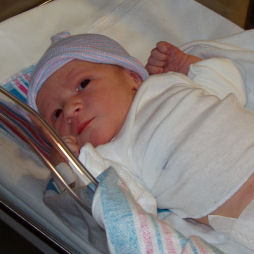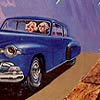
Simviation Forums
Flight Simulator and other chat


The Anson entered service with the RAF in 1936 and, on the outbreak of war, formed the backbone of Coastal Command. The 'Annie' might have earned the epithet 'faithful' but with a top speed of less that 190 mph, a range of about 700 miles, and a bomb-load of 360 lbs, she was hardly a fast woman! However, she had - for the time - an advanced retractable undercarriage, even if it was manual and required 160 turns on the wheel.
Nevertheless, 'Faithful Annie' proved her worth as a reconnaissance and anti-submarine aircraft, with 500 Sqn attacking its first U-boat on 5th September 1939. Plt Off Harper of 206 Squadron earned a DFC for his attack on a surfaced U-boat on the 3rd December in the same year.
Incredibly, the Annie had success in air-to-air combat: in September 1939, an Anson of 269 Sqn shot down a Dornier Do 18. On 1st June 1940, Plt Off Peters of No 500 (County of Kent) Squadron led a patrol of three Ansons to Dunkirk to support the evacuation of the BEF. The flight was attacked by nine Me 109s and two Ansons were sufficiently damaged to force them to return to base. Peters remained on station, and made himself a very difficult target by slow, evasive manoeuvres at wave-top height. One Me 109 overshot his attack and Peters downed it with his nose gun; a second 109 was then shot down, and a third returned to base with severe damage. Peters returned safely to base - with just one bullet hole in his aircraft. Annie had truly proved herself 'faithful', and Peters was awarded a well-earned DFC.





Sergeant Pilot William Aubrey Brew
From Pilot to POW in One Short Sweep
William Aubrey Brew applied for entry into the Royal Australian Air Force (RAAF) for the duration of World War II in late January 1940. Although an a thorough, full-day medical examination followed almost three months later, it would be a full six months after signing his attestation papers that he was finally accepted by the RAAF and admitted for pilot training. (In Canada)
As some of the course lecturers were British pilots who had seen action during the Battle of Britain, the men began to sober from the spirit of adventure, which had endured since enlistment. Slowly, the realisation of what awaited them in the United Kingdom began to emerge. Sadly, although they could not have known it at the time, several of them would not survive the year.
The course culminated in a graduation ceremony in Borden's drill hall, at which each of the men was presented his Wings. The Globe and Mail reported:
Squadron Leader G. A. R. Bradshaw of the R.A.F. pinned the wings on each member of the class after Group Captain R. S. Grandy, officer commanding the station, had addressed the graduates.
Most trainees graduated as Sergeant Pilots, although almost a third graduated with commissions as Pilot Officers; Brew was amongst the Sergeant Pilots. Two days later, his picture appeared with 41 other graduates on page 21 of the Toronto Daily Star, whilst an article on the graduation was also printed on page 3 of the same publication.
Days later, the men were transported to No. 1 Troop Embarkation Depot at Debert, near Halifax, Nova Scotia, to await a troopship to take them to the United Kingdom. They boarded the vessel Georgic and departed Canada on 6 April 1941, escorted part way across the Atlantic by the battleship HMS Rodney.
Hawarden's Operations Record Book (ORB) records the course's commencement on 23 April thus: "No. 20 Course commenced, comprising 8 Officers and 23 Sergeants from 9 F.T.S., 4 Officers and 11 Sergeants Canadian trained. Of these 1 Officer and 11 Sergeants were Australians." [PRO Air 29/683]
Until now, none of them had flown a Spitfire, let alone set foot in one. Much to their pleasure, they were soon sitting behind the controls, undergoing intensive training to fly this magnificent aircraft, which Brew recalls was "finer than driving a car".
However, these earlier training versions left a lot to be desired. Most were "clapped out" Spitfire Mk. I's, which had survived the Battle of Britain in various conditions and were no longer considered fit for combat. But they proved a good basic trainer for pilots who would later fly more advanced and improved models.
Part of the training consisted of repeated wheels-down landings and immediate take-offs without stopping, which was referred to as 'circuits and bumps'. One of the biggest challenges, however, was learning to coordinate between steering with the right hand and working the throttle with the left, then changing to steering with the left hand and pumping a lever up to 30 times with the right to lift the undercarriage manually. It required quite a bit of practice to get right, and many a pilot 'burped' his aircraft across the aerodrome before he got the hang of the manoeuvre.
http://brew.clients.ch/BillRAF2.htm
Bill McRae was born in Aberdeen, Scotland on 09/09/1919.
Bill: "We moved to Port Arthur, Canada (now Thunder Bay) in 1922
Bill McRae flew over 240 combat zone sorties in British & Canadian Squadrons being operational for over three years. He flew from the bases in Scotland to the shuttle bases of Takoradi in Africa. His war ended over Normandy flying in air combat and ground support missions every day for 60 days. Like many of his contemporaries he felt a duty to join in the war effort and enlisted on June 13th 1940 just after the fall of France. England stood alone and the Battle of Britain was just about to begin.
I landed in England on the 31st of May 1941, along with three others from my course, not knowing what I would be flying until ten days later later when I reported to No. 57 Operational Training Unit at Hawarden, North Wales and saw a number of Spitfires on a large grass airfield. They were all tired old Mk Is, a few still with hand pumped undercarriages. Scattered around the field were a number of Wellingtons from the resident Vickers factory.
Having not flown for over two months I was given a quick two circuit checkout on a Mk I Miles Master, then over the next few days put in two hours solo on the Master, becoming familiar with the area; and what a shock it was. I had previously flown only in winter, from rolled snow. Our 8 miles to the inch map was easy to read, with usually clear skies, and an uncluttered landscape. Now I had a four miles to the inch map, with the landscape a profusion of towns and villages, multiple railways, crooked roads going in all directions, and visibility limited by industrial smog. But, as one wartime song suggested, "the first year is the worst year, you'll get used to it", eventually I did. I should add that the two hours on the Master brought my total solo time to 70 hours.
We were briefed on the Spitfire's characteristics, which differed considerably from types previously flown. The 1,000+ hp, liquid cooled, RR Merlin 2 or 3 required the coolant temperature to be monitored and controlled by a manually operated radiator shutter. The control column was pivoted about a foot from the top, and topped with a circular spade grip. Within the spade grip was a bicycle type brake lever which controlled pressure to the air brakes, with differential application by movement of the rudder pedals. Undercarriage control was on the right side of the cockpit, requiring change of hands soon after take off. . Air operated flaps were selected by a simple toggle on the instrument panel, either up or fully down. The tail wheel was non-locking, non- steerable, fully castoring. This could be a problem in some situations; more about this later.
http://www.geocities.com/CapeCanaveral/Runway/9601/canada2.html


























Thanks for that link on KG200 Hagar, I've been looking for that (I couldn't remember their name)
Ozzy










Return to Specific Aircraft Types
Users browsing this forum: No registered users and 330 guests